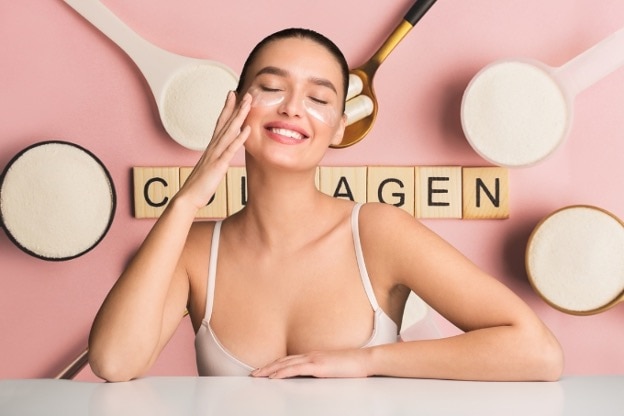The Indian beauty industry should be pleased that the makeup industry is increasingly recognising the variety of dark skin tones. Expect to comb through a number of selections before finding the ideal match now that foundation and concealer brands are providing more inclusive tones. Yet a little birdie tells us that although some of you are still looking over the internet for the best foundation, some of you are absolutely bewildered by the nuances of skin undertones and tones. And to be honest, we comprehend your situation. It also took us some time to learn the fundamentals of the various undertones.
And for your benefit to your rescue, we have the ideal advice that will enable you to understand your undertone without too much difficulty. We discuss how to quickly test your undertone in the sections below. Without further ado, let's start by going over all the information you need to know about skin undertones and how to spot them on Indian skin.
Difference Between Skin Undertone and Skin Tone

PSA: Your skin undertone and tone aren't the same thing, contrary to popular belief. To tell you more, our skin tone is the colour of the skin's top layer or surface. Skin tones are often divided into four categories: fair, medium, olive, and deep.
On the other hand, undertones refer to the soft colour that is present beneath the skin's surface. Unlike skin tones, which are temporary and fluctuate, undertones are permanent and do not. Melanin deposits on our epidermis define the colour of our skin. Although there are a few other kinds, they are typically divided into three broad groups: warm undertones, cool undertones, and neutral undertones. So, now if you’re confused about what your skin’s undertone, let’s figure it out with all the right measures.
Types Of Skin Undertones

It's crucial to master the fundamentals before learning how to assess your skin undertones. As previously discussed, there are three categories of undertones: warm undertones, cool undertones, and neutral undertones. A cool undertone means you have pink and blue undertones, whereas warm refers to a complexion with hints of yellow and golden colours. Yet, neutral undertones suggest a combination of warm and cold tones beneath the skin.
Discuss this point in detail and provide a good introduction to the rest of the article. Begin a listicle of top tips on how to find your skin undertones below.
How To Find Your Skin’s Undertone
All the tips are listed!
Tip #1: Check your veins

The simplest way to determine your undertone may be to think about the colour of your veins. Simply grip your wrists to see if your veins are green, bluish, or a combination of the two colours. You probably have green veins on your wrists if you fall into the warm undertone category. Think of yourself as someone with a chilly undertone if your veins are blue or purplish. Yet, if your veins are a mix of green and blue, you unquestionably fall under the category of neutral undertones. Check the colour of your veins on your face and neck for utmost precision in determining your undertone.
Tip #2: Jewellery metre

You probably look really gorgeous with gold jewellery. However, if you prefer it to silver jewellery - get the hint…it’s a pretty blatant indication that you probably have a warm undertone. On the other hand, silver jewellery complements those with chilly undertones effectively. Having trouble deciding whether silver or gold looks better? Lucky girl, you might have neutral undertones, giving you another excuse to spend a fortune on jewellery!
Tip #3: White t-shirt test

A white t-shirt test is one of the easiest ways to ever determine your undertone. Simply grab a piece of white paper if you don't currently have one. Hold the white T-shirt or piece of paper up to your face in bright natural light to see if you have a warm, cool, or neutral undertone. You have a warm undertone if you believe your skin tone is yellowish and you would look better next to a cream or off-white colour. Conversely, warm undertones appear reddish when pressed up against a piece of white paper or fabric. If your undertone is neutral, you'll see that you choose both off-white and stark white fundamentals.
Tip #4: Skin’s reaction to sun

Analysing how your skin reacts to sun exposure might help you identify your undertone. Those with cool skin undertones are prone to burning readily, whereas those with warm undertones are said to tan more quickly. It has been shown that individuals with neutral skin undertones tend to burn first from UV radiation, followed by a tan.
Tip #5: Consider your eye & skin colour

Are your eyes and hair light or dark? You might be shocked to learn that these distinctive qualities about you might reveal your undertone. Those with dark hair and eyes can have warm undertones, albeit this isn't a foolproof technique. On the other side, lighter skin tones like your eyes and hair may indicate that you have a possible cool undertone.
Always keep in mind that mastering a snatched makeup look requires knowledge of your skin undertone. We strongly advise you to choose every makeup product you purchase judiciously in line with your undertone, including foundations, concealers, and even lipsticks.
FAQs about What Is Your Skin Undertone and How to Find it
Answering all your questions!
Q1 Which lipstick shade complements the warm undertone?
A1 Warm skin tones should choose warm berry shades like raspberries. So much so, berry lipsticks with orange undertones, shades like burgundy, deep reds and maroon berries. If you’re looking for the right pick, we suggest the Lakmé Absolut Matte Revolution Lip Colour.
Q2 Which clothing hues suit cool undertones the most?
A2 The coolest hues on the colour wheel work well with cool skin tones. Emeralds, dark purples, lavender, pink, ice blue, and vivid blues are the best colours to wear. Very pale yellows, rose reds, and rubies can be used to add a warmer hue to your attire.
















 Privacy Notice
Privacy Notice
Written by Anushka Shah on 9th Mar 2023